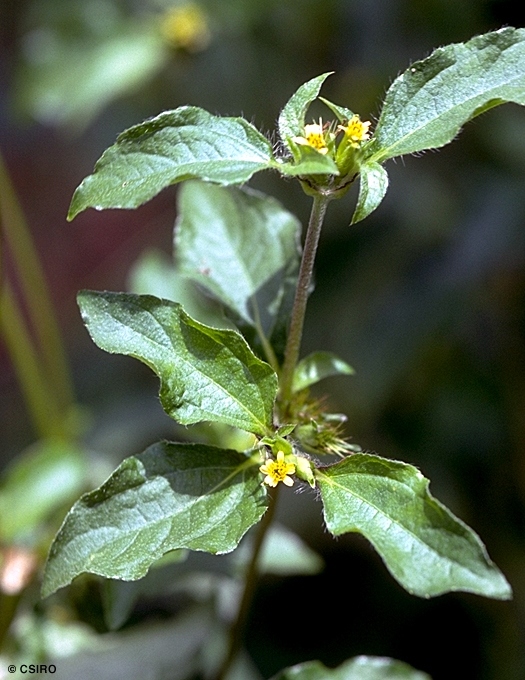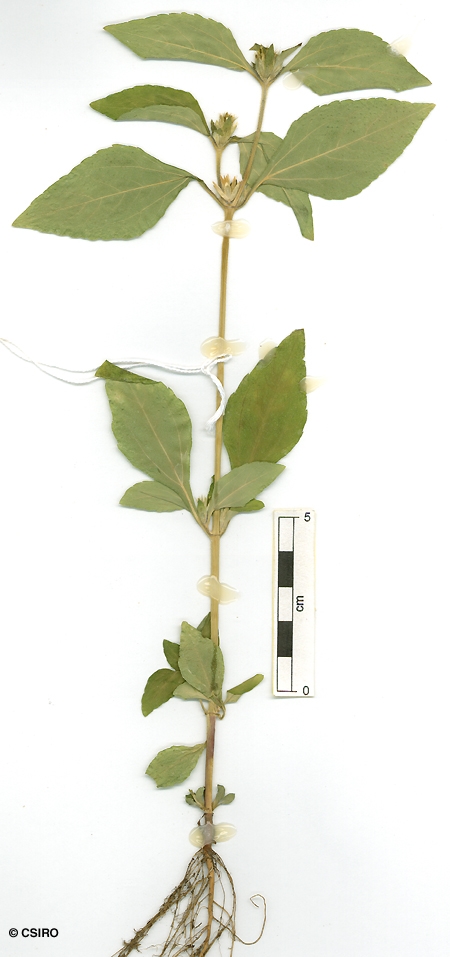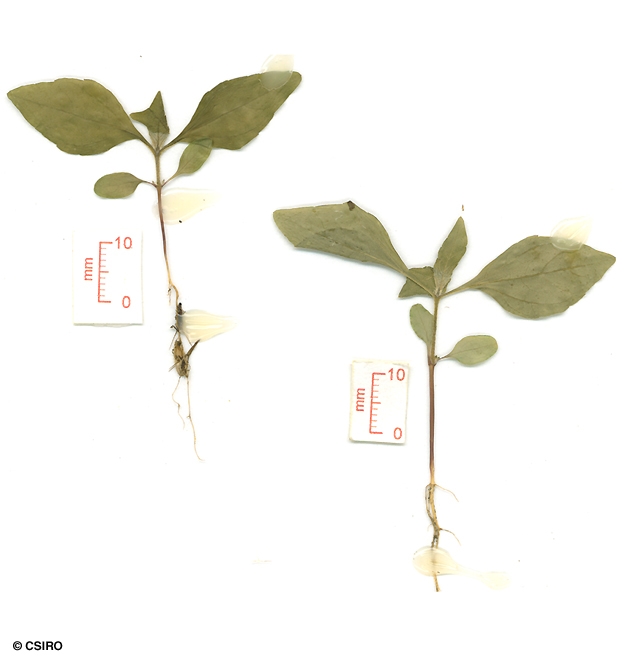Australian Tropical Rainforest Plants - Online edition
Synedrella nodiflora (L.) Gaertn.




Gaertner, J. (1791) De Fructibus et Seminibus Plantarum 2: 456.
Babadotan Lalaki; Cindrella Weed; Cinderella Weed; Broowan
Usually flowers and fruits as a herb or shrub about 0.5-1 m tall.
Flowers produced in heads about 8-10 mm long, in each head the outermost flowers are female and the innermost flowers are male, intermediate flowers are hermaphrodite. Anthers fused to one another but the filaments are free. Pollen yellow. Stigmas hairy.
Fruit shape variable depending on the type of flower from which it developed. Fruits about 4 mm long, equipped with hairy spines by which fruits adhere to clothes, etc. Cotyledons wider than the radicle.
Hypocotyl pubescent, hairs short and erect. First pair of true leaves with hairs on both the upper and lower surfaces but less frequent on the upper surface, margins inconspicuously toothed. At the tenth leaf stage: stems, petioles and both the upper and lower surfaces of the leaf blade clothed in white appressed hairs. Ridges resembling stipular scars usually visible across the stems between the petiole bases. Seed germination time 10 to 20 days.
An introduced species originally from tropical America, now naturalised in NT, CYP, NEQ and CEQ. Altitudinal range from near sea level to 800 m. Usually grows as a weed of agricultural land and waste places but also found in monsoon forest, vine thickets, and in clearings and along roads in rain forest.
Food plant for the larval stages of the Common Eggfly Butterfly. Common & Waterhouse (1981).





